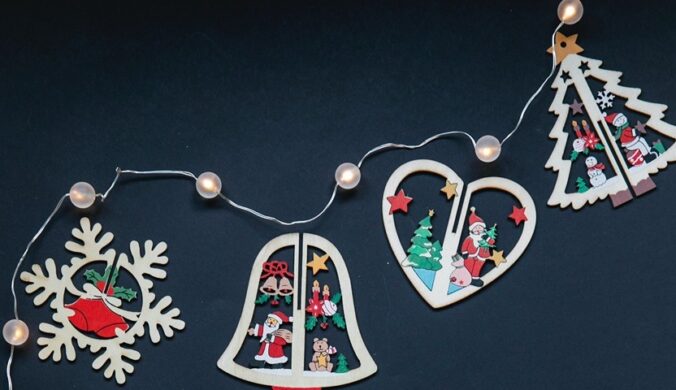Every year on December 25, we celebrate Christmas, a day for spending time with family, observing an important Christian holiday, partaking in lighthearted traditions, or just spreading some holiday cheer! Christmas has evolved over several millennia into a worldwide celebration that’s both religious and secular and chock full of fun-filled, family activities.
History of Christmas
Traditionally, Christians claim Christmas as the day on which Jesus Christ, the Son of God, was born. And although many of our Christmas Day rituals and traditions evolved from that singular moment, that’s not the whole story. Although there are myths and truths about Christmas, let’s unpack what we do know.
The fact is that no one knows the exact time and place of Jesus’ birth. In the Bible’s New Testament, apostles Matthew, Mark, Luke, and John share similar stories but they never actually name the date of Jesus’ birth. December 25 is largely attributed to the first Christian historian, Sextus Julius Africanus, around 221 A.D.
In one view of why December 25 was chosen as the official date for Christmas, historians believe the early church wanted to link the Son of God’s birth with the “rebirth of the sun,” which arrives after the winter equinox. A second view bases the date around Jesus’ date of conception on March 25, at the spring equinox. December 25 would then be the date of Jesus’ birth exactly nine months later.
At one point, the Church designated January 6 as Jesus’ baptismal date and the correct date for Christmas. But by the 9th century, Christmas was observed only as a minor holy day.
By the Middle Ages, Europeans created some of the Christmas customs we recognize today. In Strasbourg, apple-decorated fir trees appeared in homes. During the 17th and 18th centuries, people started to give gifts as symbolic of the Magi arriving in Bethlehem with offerings for the newborn baby Jesus. By the 19th century, fir wreaths laden with 24 candles representing the 24 days before Christmas were later reduced to a much safer four candles. Eventually, Christmas Day traditions spread beyond Europe to Latin and North America and other places around the world.
Christmas timeline
With the help of astronomers and mathematicians, Sextus Julius Africanus — a 1st millennium historian, calculates the date of Jesus’ birth as December 25.
After dutifully attending church services on Christmas Day, all hell breaks loose with displays of public drunkenness, revelry, and rabble-rousing.
English colonists arrive in America, fleeing religious persecution with an orthodox Puritan contingent banning Christmas in Boston, while a more lenient group share eggnog during Christmas in Jamestown, Virginia.
Christmas is declared a federal holiday with most workers receiving paid time off.
Christmas - Survey Results
Data gathered by a top Houston Marketing Agency
Christmas Traditions
Gift-Giving
In most countries in the world, gifts are given to friends and loved ones, symbolizing the original offerings by the Magi of gold, frankincense, and myrrh to the baby Jesus.
Christmas Reenactments
Over several days leading up to Christmas in Mexico, there are reenactments of Mary and Joseph’s frantic search for an inn where the baby Jesus might be born. On Christmas Day, children take turns batting a piñata stuffed with little toys and holiday candy.
Caroling
Singing carols on Christmas Eve and Christmas Day involves strolling groups of singers, gaily dressed, who sing holiday songs in town squares, business districts, or in front of private homes.
Christmas FAQs
Why do we celebrate Christmas Day?
Most Christians celebrate Christmas Day on December 25 as the day that the Son of God, Jesus Christ, was born.
Was Jesus born on Christmas Eve or Christmas Day?
Based on the New Testament account by the apostle Luke of Jesus’s birth, most Christians believe that Jesus was born at night. To celebrate, many believers attend a midnight mass or church service.
Is Christmas Eve a federal holiday?
No. Christmas Eve isn’t a federal holiday but in many parts of the United States employers will give non-essential workers either part of the day or the full day off with pay.
Christmas Activities
Make your own Advent calendar
Spread the holiday excitement by making a calendar filled with sweet surprises for the month. Create your own Advent calendar by using paper bags, a muffin tin, envelopes, or other accessible items around the house, and include cute and quirky little presents to celebrate each day. These make perfect holiday gifts or a great way to #treatyourself every day in December.
Spread cheer
The holidays are the perfect excuse to spread cheer to those around you and, in doing so, help you enjoy the holiday more, too. Whistle along to your favorite Christmas tune, smile at others, and wish everyone a Merry Christmas or Happy Holidays. Your joyful holiday spirit will be contagious.
Organize a Christmas potluck
Organize a special potluck dinner with your friends and family. One of the most important traditions of the Christmas season is to gather with those you care about and make winter a little warmer by sharing the warmth of compassion with them. Your friends and family will leave with stomachs full of food and hearts filled with happiness!
5 Crazy Facts About Christmas
26 million Xmas trees
In 2015, approximately 26 million Christmas trees were purchased at an average cost of $50.82 each.
$29.14 spending on Christmas cards
In the United States, most consumers shell out an average of $29.14 for Christmas cards.
More than half of Americans buy gifts online
About 64% of American consumers buy their gifts online.
Christmas wreaths are Christ symbols
The holly represents the crown of thorns Jesus wore at his crucifixion, and the red berries symbolize the blood he shed.
Christmas decorating lands thousands in the E.R.
The Consumer Product Safety Commission estimates that 14,700 people visit hospital emergency rooms each November and December from holiday-related decorating accidents.
Why We Love Christmas
It has deeper meaning
The Christmas holiday focuses on honoring the sacred birth of Christ in the Christian religion. The Christmas traditions we know today stemmed from this story — the Three Wise Men came to see the newborn Jesus bearing gifts and they embody the seasonal spirit of giving gifts to others. It helps us remember the gestures of love, kindness, and forgiveness.
It's joyful, merry, and bright
Christmas is one of the most joyful holidays! Some celebrate it just to partake in its holiday fun or to spend time with family. Houses are decked out in colorful lights and beautifully decorated pine trees, the delicious smell of hot cocoa and spices fill the air — there's nothing that quite tops the beautiful Christmas spirit.
It's sweater season
Christmas is the one time of year where collections of finely knit, red-and-green light-up sweaters adorned with bows, glitter, and knick-knacks emerge after being stowed away in cardboard boxes all year. These glorious garments (some of which might twinkle with lights or sing a Christmas song) make their debut only during this special season.
Christmas dates
| Year | Date | Day |
|---|---|---|
| 2025 | December 25 | Thursday |
| 2026 | December 25 | Friday |
| 2027 | December 25 | Saturday |
| 2028 | December 25 | Monday |
| 2029 | December 25 | Tuesday |















